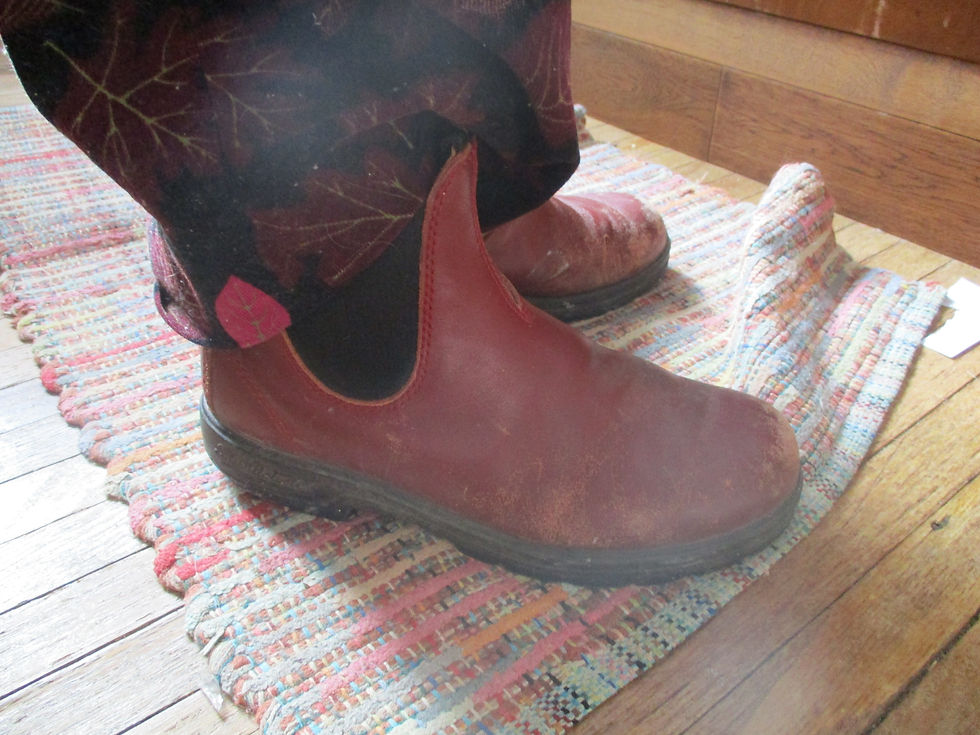Buy Naked Fruits and Vegetables
- Laura Crystal
- Nov 7, 2019
- 3 min read
“What a scandalous thing to suggest!” you might say with wide eyes and a disapproving look. But the real scandal is the plastic that normally wraps our produce. You may not have a choice with some of what you buy, but you can avoid putting your fruits and veggies in plastic bags.

This is an easy tip for everyone who buys fresh produce at a grocery store. You know those flimsy little plastic bags that the grocery store provides for your fruits and veggies? Don't use them. Yes, that's it.
But you may have concerns, “My apples will roll all over my cart, my broccoli might get dirty and my bananas will be touching my oranges (and we all know how bananas feel about oranges).”
Well, don't worry, your produce will be okay. Just surround your apples with other groceries and they will be surprisingly well behaved. Broccoli, on the other hand, is a little bit of a trouble maker and it does like to get dirty between the grocery store and home. But I imagine that most of you already wash your broccoli before eating it, so it gets cleaned anyway. And as for the bananas and oranges: get over it bananas, you'll be with the oranges in our bellies anyway.
Other (less silly) concerns might cross your mind, too.
Transporting a lot of little things (like beans and brussel sprouts) is certainly a challenge. Luckily most grocery stores have paper bags, meant for mushrooms, that you can use. Even better, buy several thin, reusable, cotton bags (there are loads of places that now sell these, look below for buying suggestions and tips for making your own) and keep them in your purse or with grocery shopping stuff.
Some of the veggies you buy might be wet from the grocery store, as well. But no need to fret. I just put all my fruits and veggies together in one reusable grocery bag or box (or two or three). Then I can simply air out the bag(s)/box(es) once I unpack them at home.
I know, I know, it's fine to talk about this in theory but how does it actually work? Well, I haven't taken a plastic bag in years (actually... maybe... okay, okay- I've caved every once in a while for an extra drippy lettuce or beans that I couldn't find a paper bag for) and my food has survived. Here's what I've learned:
No issues transporting or storing without plastic bags: broccoli, cauliflower, cabbage, cucumber, herbs, lettuce, zucchini, peppers, avocados, onions and garlic (do better without plastic), asparagus (store in fridge, standing in container with water like cut flowers), apples, bananas, oranges, plums, pears, peaches, lemons, limes
Wilts a little over time in the fridge: kale and swiss chard (still usable, though, and better than turning slimy and yellow in plastic)
Becomes a little flaccid over time in the fridge: carrots, parsnips, radishes (this doesn't bother me, though. My daughter has actually requested “those bendy carrots”.)
Needs something for transportation: beans, peas, brussel sprouts, mushrooms
My list obviously doesn't include every fruit and veggie but I hope it helps you make the transition to bag-less produce.
One of the simplest, easiest ways to reduce our plastic use is to let our fruits and veggies out of the bag. So instead of shamefully covering our produce in plastic, let's expose its raw beauty, naked and free.
Reusable Produce Bags: Buying or Making
Although buying is generally easier than making, sewing your own is very simple (as long as you have a sewing machine). Here's some help with both...
When buying:
make sure it's cotton or linen (many are polyester and you don't want to replace plastic with plastic. Don't buy bamboo either- it sounds natural but the process to make bamboo into material is extremely toxic- I will talk about that in a later post) so it can be composted when it finally wears out
buy local if possible
make sure the bag is thin so that it doesn't add extra weight when you pay for your produce
Where to buy:
Oats and Honey Bulk Store (check out my post in Eco Stories,"Oats and Honey and Plastic Alternatives" for location)
Well.ca: https://well.ca/searchresult.html?keyword=reusable+produce+bags
even Walmart has them: https://www.walmart.ca/en/ip/Drawstring-Storage-Bag-by-MISSLO-Cotton-Biodegradable-Breathable-Dust-Proof-Pouch-Reusable-Grocery-Bags-Set-of-3/PRD4XPOVNNEZEX1
When making:
buy used cotton shirts at a thrift store (extra large will get you the most fabric for your money)
buy organic cotton (the pricier option) at a fabric store
How to make:
a great tutorial: https://wholefully.com/reusable-produce-bags-tutorial/



Comments